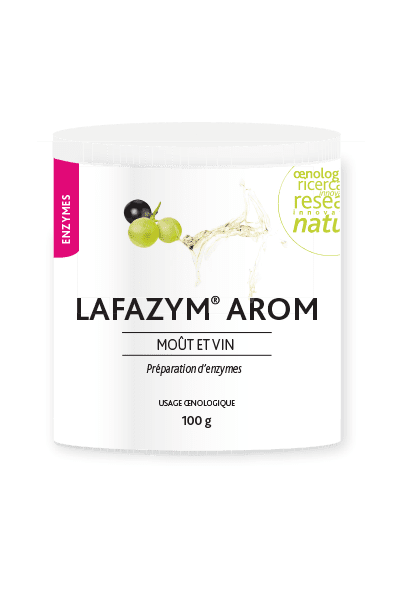carolinawinesupply
Lafazym Arom 100g
Couldn't load pickup availability
• LAFAZYM® AROM increases wines aroma intensity.
• LAFAZYM® AROM contains a high beta-glucosidases concentration which enables the release of a great number of
aroma from their glycosylated precursors (terpenes, norisoprenoids,…).
• LAFAZYM® AROM is particularly recommended on numerous white varietals such as Muscats, Riesling, Gewürztraminer,
Chenin Blanc, Pinot Gris, Viognier, some Chardonnays and Sauvignons but also a variety of red cultivars for the production
of rosé wines from Syrah or Grenache…
OENOLOGICAL CONDITIONS
• The ß-glucosidase reaction speed is reduced in presence
of sugar LAFAZYM® AROM is thus preferably used at
the end of alcoholic fermentation or on finished wines.
This enzymatic reaction can be stopped by a bentonite
treatment (for example, MICROCOL® ALPHA at 5 – 10 g/
hL / 50 - 100 ppm).
• Bentonite: Enzymes are irreversibly inactivated by
bentonite. A potential bentonite treatment must always
be carried out after enzymatic action is completed, or
enzyme addition must take place once the bentonite has
been removed.
• SO2
: Enzymes are not sensitive to normal doses of SO2
(<
300 mg/L) but it is recommended not to put the enzymes
and sulphurous solutions in direct contact.
• The preparations are generally active at temperatures from
5°C to 60°C (41 - 140°F) at a wine pH of 2.9 to 4.0
DOSAGE
The dosage is to be adapted taking into account the grape
variety hence its bound aromatic potential as well as the
targeted wine aromatic profile.
• 2 to 4 g/hL (20 - 40 ppm).
Contact time: 5 weeks on average.
The dosage can be determined by trials in bottles. The effect
of the enzyme must be monitored by regular tastings.
A batch of wine treated with LAFAZYM® AROM can then be
blended achieve the desired aromatic profile.
Share


